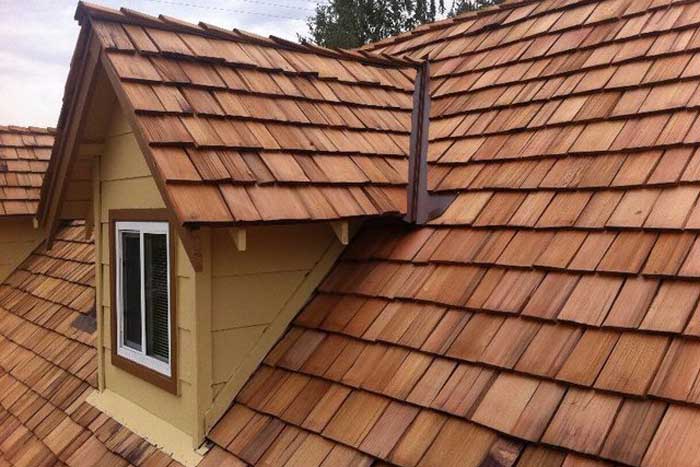Professional Wood Shake Roofing in San Jose, CA
Long Lasting, Weather Resistant Cedar
The word shake refers to a basic wooden shingle. Higher grades of cedar wood shake are used to create long-lasting, weather-resistant roofs with a rustic look.

Not All Wood Shakes Are Equal
The most important factor in selecting a quality, long-lasting wood shake is the angle of the grain. Shingles come in three basic grain exposures: edge grain, flat grain, and slash grain. The quality can be judged by the appearance of the grain.
Grain appearance is determined by the part of the log from which the shake or shingle is cut. Grain is important because it has a great influence on the long-term stability of the shake or shingle. Stability is determined by how likely the shake or shingle is to check, split, erode or suffer distortion, such as twisting, curling or cupping. Checking is cracking that doesn’t continue clear through the shake or shingle. Edge grain and flat grain are the most common types of shingles, although it’s not unusual to find some flat-grain shingles on a roof that has mostly edge grain.
Edge vs. Flat Grain
Edge grain and flat grain refer to the orientation of the tree’s annular growth rings to the sawn surface of the shingle or the split face of a shake. These terms are used similarly in all aspects of wood products.
Edge Grain
- Also known as vertical grain, quarter sawn, rift sawn or radial grain
- All wood species are more dimensionally stable when sawn or split at 90º to the growth rings, (quarter sawn oak flooring)
- Edge grain better resists movement during changes in moisture content
- 100% edge grain shingles or shakes will always perform better than grades that allow flat grain
- The vertical lines on the exposed face of a shingle or shake indicate the fine-grained growth rings of Western Red Cedar or Alaska Yellow Cedar
- Looking at the butt end of an edge grain shingle, you will see the annular growth rings standing on end, perpendicular to the surface – like a comb
Flat Grain
- Also known as flat sawn, slab sawn, plain sawn or tangential grain
- Flat grain boards or shingles tend to curl, cup or move more readily than edge grain products, relative to the wood species
- Flat grain cedar shingles and shakes can be used very successfully when the project and application methods are carefully considered. Ask us how to save money with mixed grain products!
- Flat grain can be seen as the open, swirling grain on the face of a shingle or shake
- Looking at the butt end of a flat grain shingle, you will see the annular growth rings running from edge to edge, parallel to the face of the shingle

Premium Grade Quality
Each quality of each bundle of shake delivered to your home is easily distinguished by a blue label
- Mill Name, Location and Phone number
- Industry Product Description
- Product Type, Grade and Quality
- Coverage Chart and Recommended Exposure
